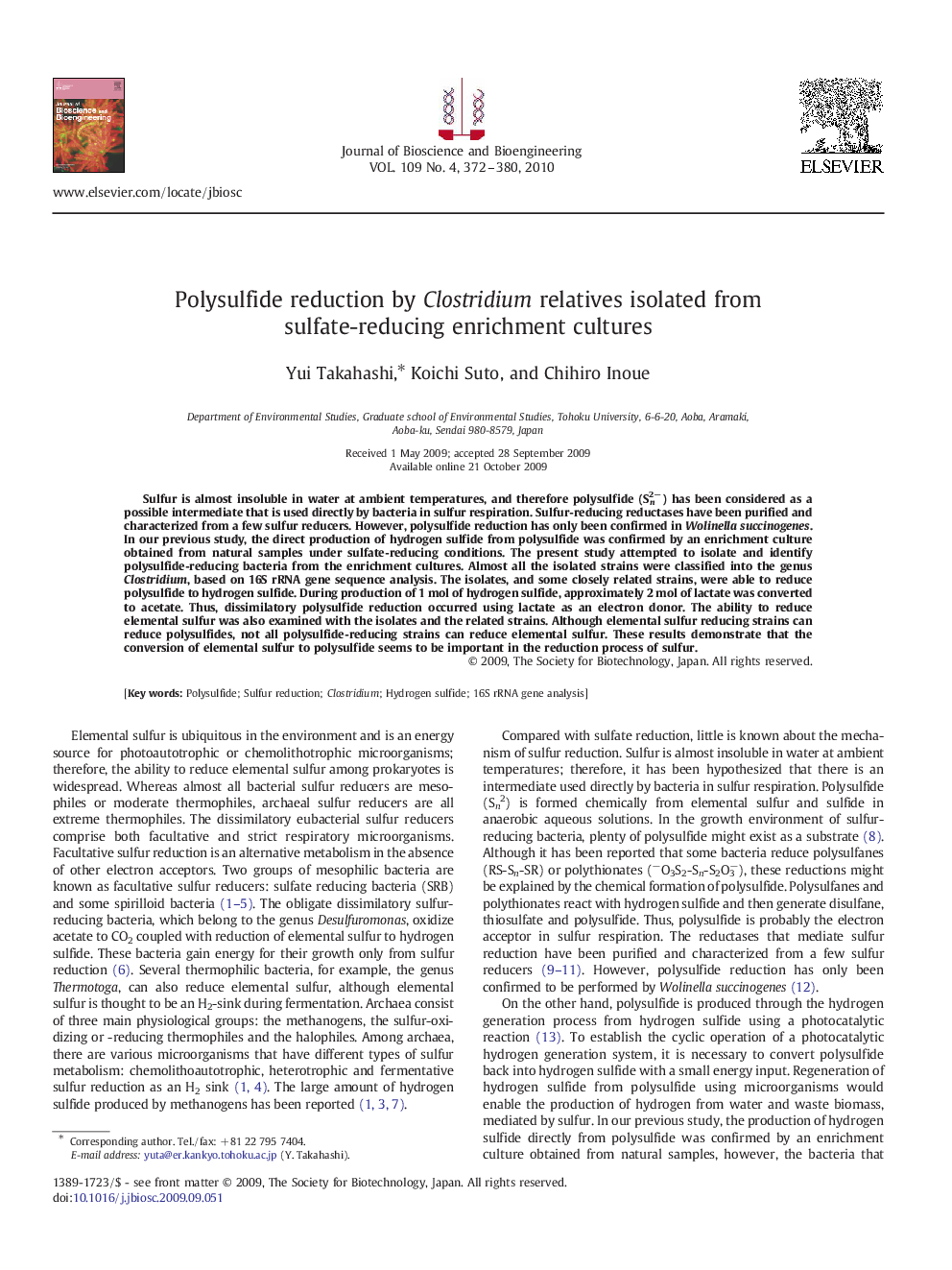| Article ID | Journal | Published Year | Pages | File Type |
|---|---|---|---|---|
| 21357 | Journal of Bioscience and Bioengineering | 2010 | 9 Pages |
Sulfur is almost insoluble in water at ambient temperatures, and therefore polysulfide (Sn2−) has been considered as a possible intermediate that is used directly by bacteria in sulfur respiration. Sulfur-reducing reductases have been purified and characterized from a few sulfur reducers. However, polysulfide reduction has only been confirmed in Wolinella succinogenes. In our previous study, the direct production of hydrogen sulfide from polysulfide was confirmed by an enrichment culture obtained from natural samples under sulfate-reducing conditions. The present study attempted to isolate and identify polysulfide-reducing bacteria from the enrichment cultures. Almost all the isolated strains were classified into the genus Clostridium, based on 16S rRNA gene sequence analysis. The isolates, and some closely related strains, were able to reduce polysulfide to hydrogen sulfide. During production of 1 mol of hydrogen sulfide, approximately 2 mol of lactate was converted to acetate. Thus, dissimilatory polysulfide reduction occurred using lactate as an electron donor. The ability to reduce elemental sulfur was also examined with the isolates and the related strains. Although elemental sulfur reducing strains can reduce polysulfides, not all polysulfide-reducing strains can reduce elemental sulfur. These results demonstrate that the conversion of elemental sulfur to polysulfide seems to be important in the reduction process of sulfur.
